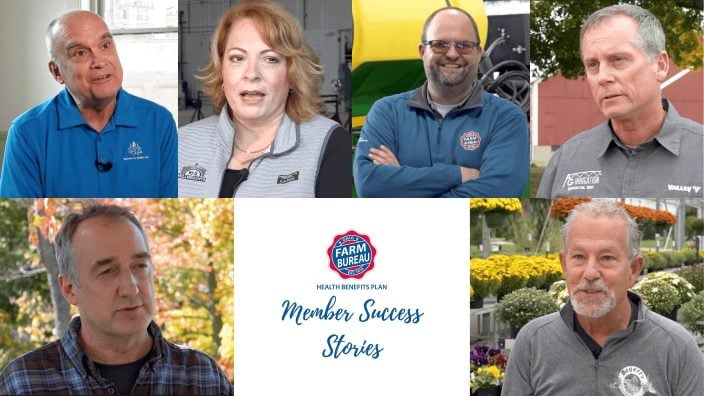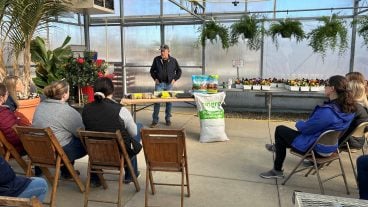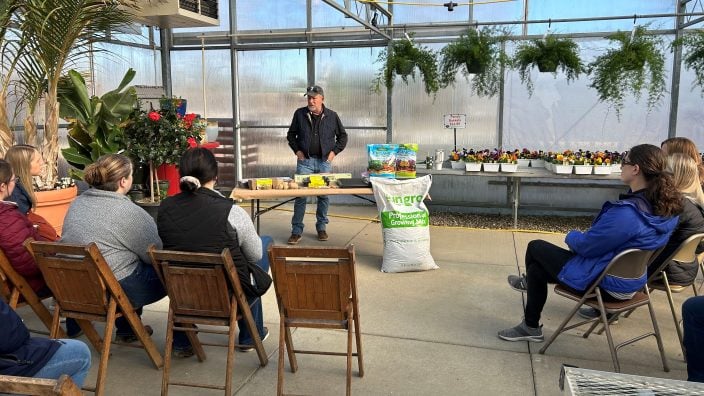Farmer’s Guide to Trucking Regulations available to Ohio Farm Bureau members
The guide includes a farm driver checklist, overview of state and federal regulations and exemptions, CDL qualifications and more.
Read More
While the number of dairy farms in northeast Ohio is only a fraction of what they were 60 or 70 years ago, the dairy industry in the county is still important to the agricultural economy. Dairy herds today are much larger and the amount of milk produced by each cow has doubled, and in some cases tripled. This suggests a lot of hard work on the part of dairy farmers today as well as more efficiency on their part. They have also taken advantage of new agricultural technology and management practices.
To help with the price of their milk, dairy farmers also have a small amount of money deducted from their milk check each month to pay for research and promotion. They realize the importance of developing new dairy products and promoting milk and the many products made from milk. Increased use can improve farm prices.
Recently the Good Foods Institute sent a letter to the Food and Drug Administration requesting that soy-based beverages be allowed to be labeled “milk.” Their reasoning was that milk is how consumers think of the soy beverage. Jim Mulhern, CEO of the National Milk Producers Federation, sent an immediate response. He said, “Ironically, in GFI’s first request to FDA in March, the organization admitted that in China – supposedly the original source of ‘soy milk’ – the more common term used in Mandarin for soy beverages was “dou jaing,” which translates to bean slurry. At least that is a more accurate and legally compliant product description.
“The efforts of GFI and other groups to alter food standards that have been in place for decades – allowing manufacturers of imitation dairy foods to append a plant name like almond, soy or quinoa in front of legally defined dairy terms such as milk, cheese, yogurt and ice cream – falsely suggests that the products are nutritionally equivalent. They are not,” he said. “This is a transparent attempt to profit from milk’s good name by emulating the wording, but not the superior nutrition, of our products. It is misleading and deceptive to allow these nutritionally inferior products to use our hard-won reputation to their advantage.”
Recently in Europe, the European Court of Justice upheld regulations that prevent plant-based alternatives from using terms like “milk,” “cheese,” and “yogurt” to describe their products. This was considered a victory for American farmers in their efforts to stop the use of their good name by imitators.
Dairy farmers spend their hard-earned dollars to do research on new uses of milk and dairy products and to promote their use. Naturally they are unhappy when imitators try to use the good name they have developed to promote their products.
When you go to the grocery store to buy milk, make sure that is what you are getting. Imitation beverages, as Mulhern has said, are not nutritionally the same.
Chocolate milk is real milk flavored with chocolate and a favorite in many families, especially those with children. Nutritionally, it is the same as other milk but may come in lower fat content. Fat content of milk can vary so it pays to read the label to be sure of what you are buying.
Support local dairy farmers by buying real milk and dairy products. They are a better buy than the imitation products and better for you. If you have an opportunity, visit a local dairy farm to see how your milk is produced.
Submitted by John Parker, an independent writer for the for the Northeast Counties Farm Bureau.


The guide includes a farm driver checklist, overview of state and federal regulations and exemptions, CDL qualifications and more.
Read More


Katie Share of Columbus has been named ExploreAg and Youth Development Specialist for Ohio Farm Bureau.
Read More

Mary Klopfenstein of Delphos has been named Young Ag Professional and Ag Literacy Program Specialist for Ohio Farm Bureau.
Read More

The plan has been updated to give sole proprietors access to more rate stability and a smart solution that offers potential savings on health care.
Read More

The American Farm Bureau Federation, in partnership with Farm Credit, is seeking entrepreneurs to apply online by June 15 for the 2025 Farm Bureau Ag Innovation Challenge.
Read More

Adele Flynn of Wellington has been elected treasurer of the Ohio Farm Bureau Federation and now holds the third highest elected office in Ohio’s largest and most influential farm organization.
Read More

Producers are urged to work with their veterinarian to practice enhanced biosecurity measures and review and limit cattle movements within production systems.
Read More

The changing seasons bring with them the need to thoroughly inspect pole barns for any damages that may have occurred during the winter months.
Read More

Hundreds of Ohio businesses and sole proprietors are raving about Ohio Farm Bureau’s Health Benefits plan with lower, predictable costs and easy enrollment and administration options.
Read More

AgriPOWER Class XIV spent a few days in March in Medina and Wayne counties learning more about northern Ohio agriculture from leaders in Ohio Farm Bureau.
Read More